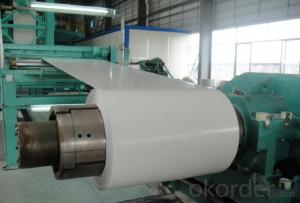Prepainted Galvanized Steel Coil (PPGI/PPGL)
- Loading Port:
- Zhuhai
- Payment Terms:
- TT OR LC
- Min Order Qty:
- 2000 PCS
- Supply Capability:
- 38000 PCS/month
OKorder Service Pledge
OKorder Financial Service
You Might Also Like
Prepainted Galvanized Steel Coil (PPGI/PPGL) Details
| Standard: | AISI,ASTM,GB,JIS | Grade: | CGCC, DX51D | Thickness: | 0.25-0.8MM |
| Place of Origin: | China (Mainland) | Brand Name: | TIANNU | Type: | Steel Coil |
| Technique: | Cold Rolled | Surface Treatment: | Coated | Application: | Roofing |
| Special Use: | Silicon Steel | Width: | 800-1250MM | Color: | Ral or according to sample |
Packaging & Delivery
| Packaging Detail: | color steel coil standard export seaworthy packing |
| Delivery Detail: | 25 days after down payment |
Prepainted Galvanized Steel Coil (PPGI/PPGL) Specifications
Base material: Hot dipped galvanized steel
Width: Available from 800MM to 1250MM
Width Tolerance: Within 0.02MM
Thickness: Available from 0.18MM to 0.80MM
Thickness Tolerance: Within 0.15MM
Performance: Smooth or Matte
Color: According to RAL standard
Lacquer Coating thickness: According to customer needs
Supply capacity: 8,000 Metric Ton per month
Our products has good performance on combining force and anti-erosion. We offer fine quality products and best price for our international customers.
Prepainted Galvanized Steel Coil (PPGI/PPGL) Pictures
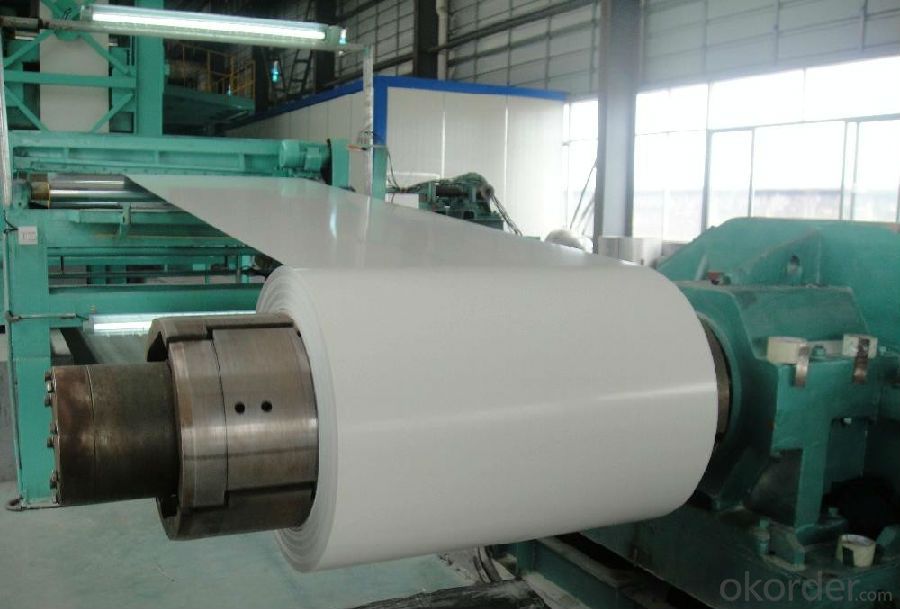
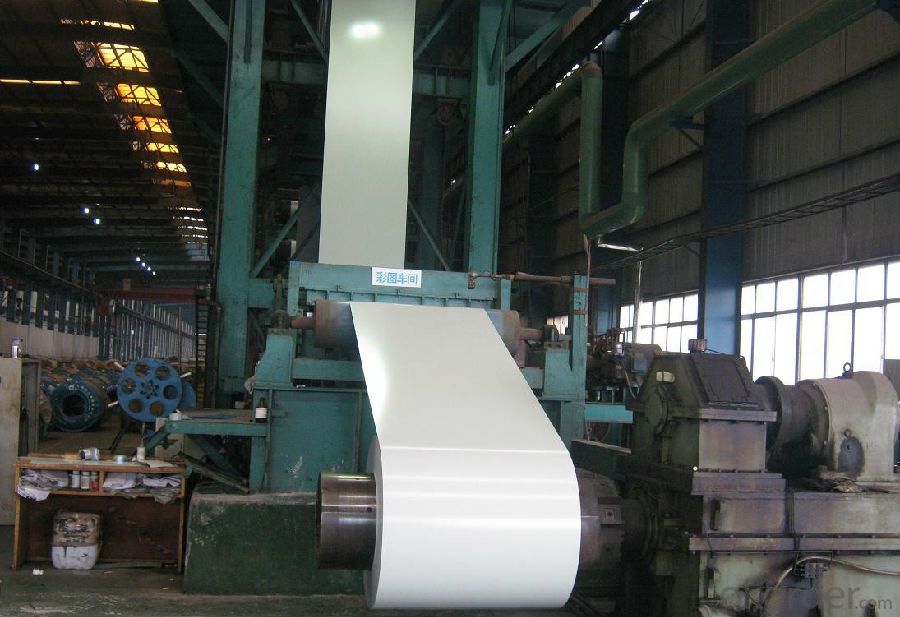
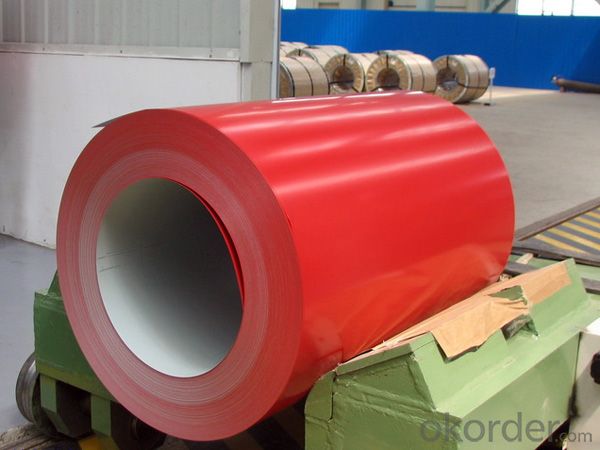
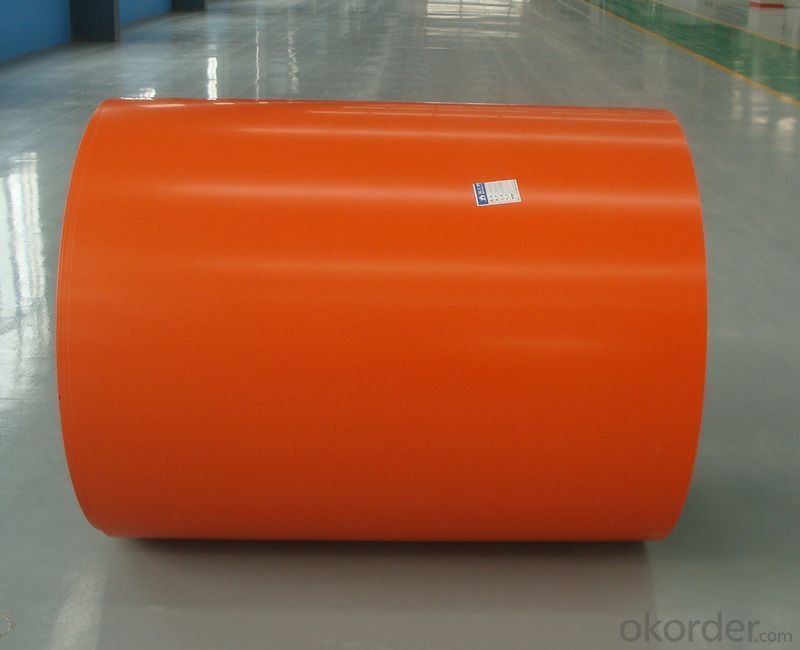
- Q:How long does the coating on steel coils last?
- The longevity of the coating on steel coils depends on various factors such as the type of coating used, the environmental conditions it is exposed to, and the maintenance practices. However, on average, a well-applied coating can last anywhere from 10 to 20 years before requiring reapplication or maintenance.
- Q:Is there a difference between hot rolled and cold rolled steel coils?
- Yes, there is a difference between hot rolled and cold rolled steel coils. Hot rolled steel coils are produced at high temperatures and have a rougher surface, while cold rolled steel coils are produced at lower temperatures and have a smoother surface. Additionally, hot rolled steel coils are typically used for applications that require less precise dimensions and a more cost-effective option, while cold rolled steel coils are ideal for applications that require higher precision and a superior finish.
- Q:How are steel coils used in the manufacturing of construction materials?
- Steel coils are used in the manufacturing of construction materials as they are rolled into sheets or strips, which can then be shaped and formed into various structural components such as beams, columns, and frames. These coils provide the necessary strength and durability required for constructing buildings, bridges, and other infrastructure projects.
- Q:I bought this Brinks pad lock and it says boron steel on the lock. I was just wondering what exactly is boron steel and how hard/tough is it?
- Boron steel is rather hard, it is by no means titanium, but certainly better than mild steel. However, as with all metals, hardness is inversely proportional to flexibility, meaning that a good solid whack with a sledge hammer could crack your lock.
- Q:What is the difference between hot rolled and cold rolled steel coils?
- The main difference between hot rolled and cold rolled steel coils is the process by which they are made. Hot rolled steel coils are produced by heating the steel above its recrystallization temperature, allowing it to be easily shaped and formed. This process results in a rougher surface finish and less precise dimensions. On the other hand, cold rolled steel coils are produced by further processing hot rolled coils through a series of rolling mills at room temperature. This process results in a smoother surface finish, tighter tolerances, and improved mechanical properties.
- Q:What are the different methods of edge camber correction for steel coils?
- Edge camber correction in steel coils can be achieved through several methods, depending on specific requirements and available equipment. Some commonly used methods include the following: 1. Mechanical tools, such as shears or slitters, are utilized for trimming the edges of the coil. This removes excess material and corrects the camber. Mechanical edge trimming is suitable for smaller coils or minimal camber. 2. Tension leveling involves passing the coil through adjustable rollers while applying tension. This elongates the steel and reduces camber. It is effective for moderate camber and commonly used for larger coils. 3. Roller leveling, similar to tension leveling, employs fixed rollers to exert pressure on the steel and flatten it. This method is preferable for thicker and heavier coils. 4. Heat straightening utilizes controlled heat to soften the edges of the coil. Once the steel becomes malleable, external force is applied to straighten the edges. Heat straightening is suitable for severe edge camber but requires specialized equipment and expertise. 5. Combination methods may be employed by combining different techniques. For instance, mechanical edge trimming may be followed by tension leveling or roller leveling to further straighten the edges. It is important to note that the choice of method depends on factors such as camber severity, coil dimensions, material properties, and available equipment. Evaluating these factors and consulting with experts is essential to determine the most suitable method for edge camber correction in steel coils.
- Q:would you consider steel a flexible substance...i am debating this with my coworkers.Thanks,
- Steel is a flexible material. It can be deformed and return to it's original shape up while the stress applied is still in the elastic range. How flexible depends on size, shape, and alloy. Some alloys are more flexible than others and a lot of this is controlled by carbon content.
- Q:Is Stainless steel called that because.....a. Its stains lessORb. Its virtually stainless (it can't stain).Lol do you know the correct answer?????
- a. is the correct answer. It will still show tea and coffee stains. I find using baking soda is a good way to clean it and freshens the drains of the sinks as well. If cleaning your refrigerator a glass cleaning spray works well, just be sure to dry it thoroughly.
- Q:There's this huge community of steelians (steelites?) in my town. Has anybody heard of this Dr. Steel?
- steel okorder thank you for posing this question. all hail dr.steel.
- Q:What are the common surface defects found in steel coils?
- Steel coils can have several surface defects commonly found. One prevalent defect is rust or corrosion, which happens when moisture contacts the steel surface and causes oxidation and rust formation. Another defect is scratches or abrasions, occurring during coil handling or transportation. These can vary from small surface scratches to deeper gouges that affect the steel's structural integrity. Surface roughness or unevenness is also possible due to improper rolling or cooling processes during manufacturing, resulting in inconsistent surface texture that affects appearance and performance. Scale is another defect, forming an oxide layer during manufacturing, giving the steel a rough and uneven look. Finally, oil or grease stains may occur during manufacturing or handling, impacting paint or coating adhesion. These common surface defects impact steel quality, appearance, and performance, often requiring cleaning, grinding, or recoating as remedial actions.
1. Manufacturer Overview |
|
|---|---|
| Location | |
| Year Established | |
| Annual Output Value | |
| Main Markets | |
| Company Certifications | |
2. Manufacturer Certificates |
|
|---|---|
| a) Certification Name | |
| Range | |
| Reference | |
| Validity Period | |
3. Manufacturer Capability |
|
|---|---|
| a)Trade Capacity | |
| Nearest Port | |
| Export Percentage | |
| No.of Employees in Trade Department | |
| Language Spoken: | |
| b)Factory Information | |
| Factory Size: | |
| No. of Production Lines | |
| Contract Manufacturing | |
| Product Price Range | |
Send your message to us
Prepainted Galvanized Steel Coil (PPGI/PPGL)
- Loading Port:
- Zhuhai
- Payment Terms:
- TT OR LC
- Min Order Qty:
- 2000 PCS
- Supply Capability:
- 38000 PCS/month
OKorder Service Pledge
OKorder Financial Service
Similar products
New products
Hot products
Related keywords
